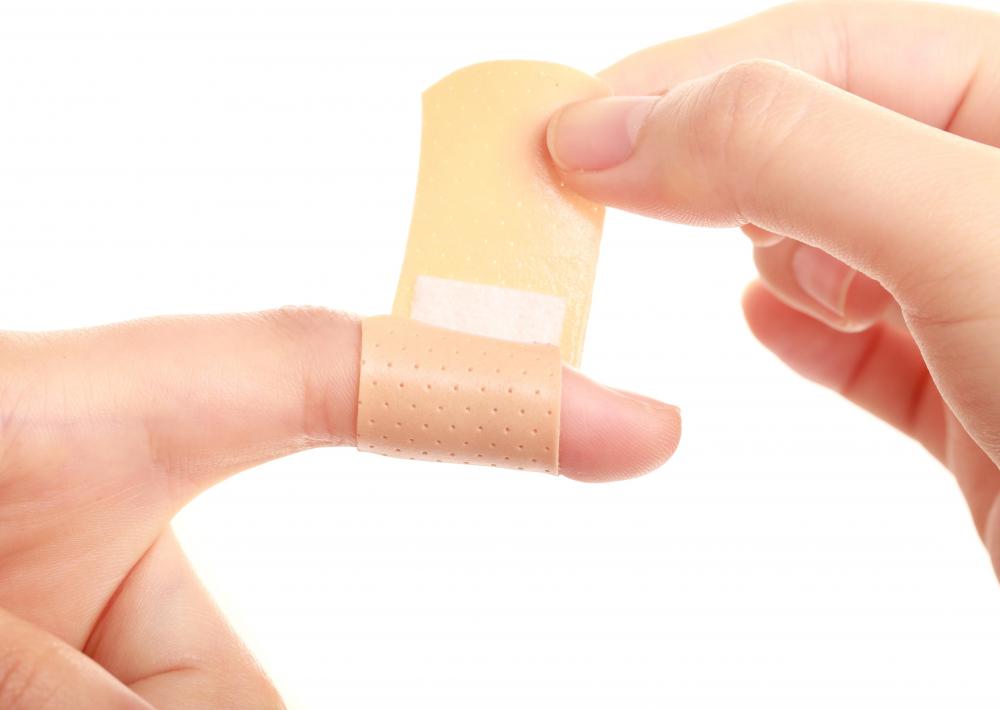At WiseGEEK, we're committed to delivering accurate, trustworthy information. Our expert-authored content is rigorously fact-checked and sourced from credible authorities. Discover how we uphold the highest standards in providing you with reliable knowledge.
How Do I Choose the Best Sterile Bandage?
The proper sterile bandage needs to be chosen when dressing an injury. Various sizes exist for consideration to ensure that the entire wound is covered. Plastic bandages are common and offer some protection from water and dirt, while their fabric counterparts may be used for better bondage or sensitive skin. Regardless of the fabric, a lint-free selection should be made to prevent foreign material from entering the wound. Blisters and burns have unique versions of bandages, as do hard-to-cover areas; roller varieties may even be used for greater stability.
The size of the sterile bandage is important when dressing a wound. The bandage should be bigger than the wound for adequate protection. Standard adhesive strips are used mostly for small cuts, and are individually wrapped to ensure sterilization. Gauze pads, on the other hand, are available in various sizes, and typically have a coating that prevents the bandage from sticking to the wound.

The composition of the sterile dressing also needs to be examined. Plastic bandages are most commonly found in stores and first aid kids. They help to protect the wound from dirt and water with their protective outer covering. A sterile bandage made from fabric, however, is better for joints and movable parts, as they will move with the skin and stay in place better. They also are an alternative for people who are sensitive to plastic bandages and often come in latex-free versions.

In addition to the type of materials used in making the bandage, the characteristics of the material should also be considered. The materials should be lint-free, so that pieces of the bandage do not transfer to the wound. Anything made of a fluffy material, such as cotton balls, should be avoided for the same reason.
Unique injuries often require a special type of bandage. A cut between the fingers or toes would be very difficult to cover with a bandage; in this situation, a liquid bandage can be used that forms a synthetic skin over top of the wound. This type of bandage is often used in athletics for injuries that must be covered immediately in order to prevent further blood flow. A thicker bandage or one with a foam outer ring is used for blisters or corns to provide cushion from further injury. When in doubt, a doctor or health care professional can recommend the best type of bandage.

When the wound exists on a part of the body that can be wrapped, a roller sterile bandage can be used. This provides more stability than a flat bandage which may be dislodged by movement or clothing. Roller bandages are made from various materials; some self-adhere and other require a closure, such as hooks or tape. This form may also be used when restricted movement is needed, such as a wrist or other joint injury.
AS FEATURED ON:
AS FEATURED ON:















Discuss this Article
Post your comments